China has a long history and people around the world are deeply attracted by its unique charm and rich culture. Shanghai is one of the biggest cities in China and a world-famous tourism destination. If you are a student interested in Chinese history and culture and have limited time, our short Shanghai student tour is your best choice. During your 3-day Shanghai student tour, you can have a walk around Tianzifang Market and Shanghai Museum where you can feel the atmosphere of humanism in Shanghai and learn about its history and culture. The natural scenery in Shanghai is also marvelous. Standing on the bridge in Zhujiajiao Ancient Water Town and looking out, you will feel like being in Venice. You can take a boat and have a tour around the water town. I’m sure this experience will round off your Shanghai student tour. The Bund and Shanghai Oriental Pearl TV Tower are also two attractions that you can’t miss. You can climb up to the TV tower and overlook Shanghai. The prosperous Shanghai will give you a unique experience in your 3-day China student tours. I can assure you that even though this tour is short, you can learn enough about the history of China beyond your imagination. Don’t hesitate! Come here and a 3-day tour in Shanghai is waving at you!

Welcome to Shanghai! Today is your first day in China. As soon as you get off the plane, your tour guide will be waiting for you with your name sign so that you can find him easily. Shanghai is a flourishing city, located in the east of China. When we mention Shanghai, the first word that comes to our mind is its economy. As an economic and financial center, businessmen from all over the world come here for business. Shanghai has a population of about 24.8 million with an area of 1,237 square kilometers, which makes it a megacity. Now, Shanghai has established a super-scale comprehensive transportation network, consisting of railway, waterway, highway, and air transport. When you come to Shanghai, one thing you can’t miss is the delicious food here. Braised Minced Eel, Stire-Fried Shrimps, and Braised River Cab with Soybean Sauce Paste are typical Shanghai cuisine. You will never forget its flavor once you taste it. The delicious food in Shanghai will make your Shanghai student tour worth the ticket.
Your first stop today is Tianzifang Market. Tianzifang Market is located at Taikang Road, a street in Dapuqiao Area. This area attracts creative artists from all over the city. Besides the creative shops, art galleries, and photography exhibitions, various cafes are scattered here. In the afternoon, you can walk along the lane and have a cup of hand-made coffee with the refreshing breeze blowing over. Even today, many residents still live here with a green mailbox that was built in the 1980s standing on the street. You may wonder why this place is called Tianzifang. It is said that Huang Yongyu, a painter named this lane after a famous painter, whose name is Tian Zifang, to make this place a source of inspiration, hoping that he can create more great works like Tian Zifang. Have a walk along the road, and you can go to the shops on both sides and pick some presents, such as paintings, traditional Chinese clothes, and some creative handicrafts.
Then, you will visit Zhujiajiao Ancient Water Town. Zhujiajiao Ancient Water Town was built along the riverside. Thousands of years ago, some people came here and settled in, gradually forming various villages and towns. The white walls, black tiles, and old lanes here make this place unique. As early as the Three Kingdoms period (220-280), many people came here and built houses. This place became a prosperous town with a large population in the Ming (1368-1644) and Qing (1636-1912) Dynasties. Its superb location and convenient traffic made here a trade zone of cotton and then became an economic center mainly trading rice and oil. The numerous crisscrossed waterways here give this place the name of Venice in the East. If you come here, you can’t miss Fangsheng Bridge, the biggest stone bridge with five arches. This bridge was built in the Ming Dynasty (in 1571) with a total length of 70.8 meters. Fangsheng Bridge was constructed exquisitely, looking like a rainbow in the distance. It is still well-preserved after all the vicissitudes. Its name originated from a celestial being, Xingchao who helped the residents a lot. When the bridge was being built, the bridge piers couldn’t be driven into the earth. Then, Xingchao was incarnated as a monk and turned this place into a beach so that the piers could be put here. Fangsheng Bridge was built successfully. Fangsheng means freeing captive animals. Local people named this place Fangsheng to commemorate the celestial being. On the first day of the lunar calendar, monks here will hold grand ceremonies in memory of Xingchao and free captive animals to show respect for life. You can have a walk on the bridge and feel its historical atmosphere.
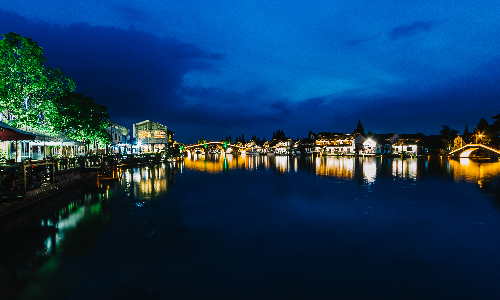
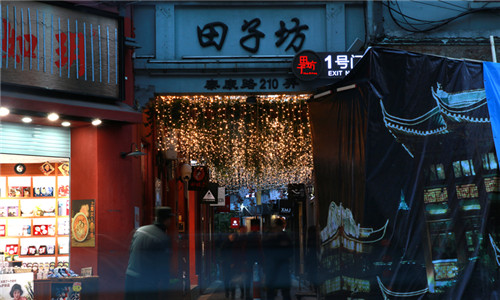
In the morning, you will go to Shanghai Museum (closed each Monday). Shanghai Museum was built in 1952. In 1993, the new site of the Shanghai Museum was constructed with an investment of 570 million yuan and opened to the public in 1996. It is 29.5 meters high with 5 floors above ground and 2 floors underground. Shanghai Museum has 11 special halls and 3 exhibition halls, with a total exhibition area of 2,800 square meters. It stores millions of cultural relics featured by paintings, hand-writings, bronzes, and ceramic wares. If time is permitted, I suggest that you should visit all the exhibition halls which will surprise you as you will learn more about Chinese history through the visit. You can have a closer look at the paintings and hand-writings of each dynasty. More than 120 great works from the Tang Dynasty (618-907) to modern times are on display in the painting exhibition hall. Induction lamps that can adjust lights automatically are set in the exhibition hall to better protect the exhibits. I believe that the time spent visiting Shanghai Museum will let you know more about Chinese culture and make your student tour fruitful.
Your next destination is Yu Garden (closed each Monday). Yu Garden was built during the reign of Emperor Jiajing (1522-1566) and Emperor Wanli (1573-1620) in the Ming Dynasty with an area of 20,000 square meters. Yu Garden was repaired in 1956 and opened to the public in 1961. The Exquisite Jade Rock, one of the three famous rocks in the south of China is located in the garden. Besides, the Dianchun Hall, which is said to be the command post of a folk group when its member rebelled against the corruption of officials in 1853. If you want to have an overview of the scenery inside the garden, you can go to the Huijing Tower. Huijing Tower is located at the center of Yu Garden. Climb up the tower and look around, and you will have a chance to see the beautiful scenery beyond imagination. Huijing Tower is surrounded by various kinds of plants, such as yellow cinnamon roots, pomegranate trees, and crape myrtles. You can stand on the top of the tower and take a deep breath. I am sure that you will feel relaxed and relieve all your tiredness.
Then, your tour guide will take you to Shanghai Old Street which lies outside Yu Garden. Shanghai Old Street has witnessed the economic and social development of Shanghai. Have a walk along the street, and you will feel like traveling back to 100 years ago. Shanghai Old Street is a unique attraction with multi functions integrating sightseeing, shopping, entertainment, and culture exhibition. In the past, the first batch of old-style Chinese private banks, gold & silver jewelry stores, wine shops, tea houses, and commercial houses gathered here. After visiting Shanghai Old Street, you will have a deep understanding of Shanghai’s culture. You are sure to love this charming city!
After lunch, you will be transferred to Shanghai Oriental Pearl TV Tower. Shanghai Oriental Pearl TV Tower, constructed in 1994, is a landmark of Shanghai integrating sightseeing, dining, shopping, entertainment, exhibition, and television transmission. You can take the elevator and go to the sightseeing platform which is at a height of 263 meters. Standing on the glass platform, you can overlook the whole view of Shanghai, appreciating the Bund and the Huangpu River in the distance. You will get an unparalleled experience and enjoy the gorgeous scenery.
Your next destination is the Bund. The Bund is located at the riverside of the Huangpu River. 52 buildings with various styles erect at the Bund. As you walk in the Bund, you will hear ring bells. You may wonder where the sound is from. It is from the Bell Tower in Shanghai Customs House. Wei Yunsi is the fourth generation of clock keepers. He began to take care of the clock in Shanghai Customs House in 1991. The sound of the bell that you hear owes to this cautious and conscientious clock keeper. You will know more about Shanghai history through this visit.
After that, you will go to Nanjing Road. Nanjing Road has a history of about 100 years and got its name in 1856. In the following 2 decades, the development of Nanjing Road has reached a climax. In the 1990s, new comprehensive commercial buildings were constructed and brought great changes to Nanjing Road. Nanjing Road today has become a paradise for shopping lovers at home and abroad and a window that opens to the outside. You can taste various kinds of delicious food such as Cantonese cuisine, Shanghai dim sum, biscuits of Taikang Food Store, and cakes of Shen Dacheng Food Store. Besides food, you can also buy whatever you want here including fair-price goods as well as luxuries. For example, you can head to Nike Shanghai 001 to order custom-made shoes. Of course, you can also walk around and buy some gifts for your families and friends.
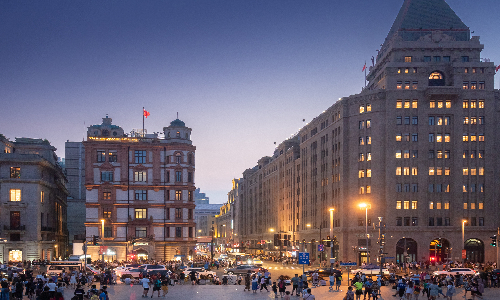
Today is your last day in Shanghai. We have arranged two attractions for you. The first one is Jade Buddha Temple. Jade Buddha Temple is well-known for enshrining two jade Buddha statues. There is a sitting jade Buddha and reclining jade Buddha, which were taken back from Burma by Master Huigen in 1882. In 1918, the temple was burnt down during the war and was rebuilt at its original site. Jade Buddha Temple copied the architecture style of the temple in the Song Dynasty (960-1279). The Hall of Heavenly King, the Grand Hall, and Avalokitesvara Bodhisattva Hall are located on the axis of the temple. There is a strange bell inside the temple. It is said that if people don’t worship sincerely, the bell will not make a sound no matter how hard you try to knock it. Therefore, believers come here from all over the country to burn joss sticks and ring the bell to show their sincerity.
Our last stop is Qibao Ancient Town. Qibao Ancient Town is in the southwest of Shanghai. This town was originally named Lu. Later, King Wuyue gave this place a gold scripture written by his concubine and said this scripture is a treasure (means Bao in Chinese). Then this place was renamed Qibao (seven treasures in Chinese). It is said that seven treasures are stored in Qibao Temple in this town and the gold scripture is one of them. Qibao Ancient Town is centered by Qibao Old Street covering an area of 57,333 square meters. This street consists of two parts, North Street and South Street. You can buy some handicrafts, calligraphy works, and paintings in North Street and local snacks such as Crabapple Cake, Fermented Glutinous Rice Pickled Meat, and Qibao Mutton in South Street.
After visiting the two places, your student tour in Shanghai will come to an end. Your tour guide will accompany you to the airport and help you board the plane. Have a safe journey home. See you!
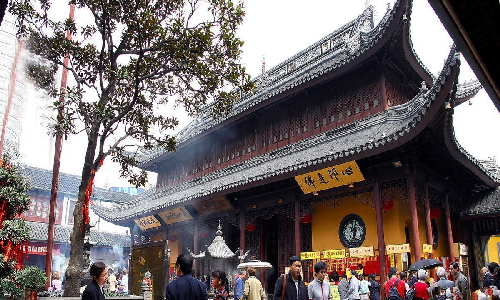
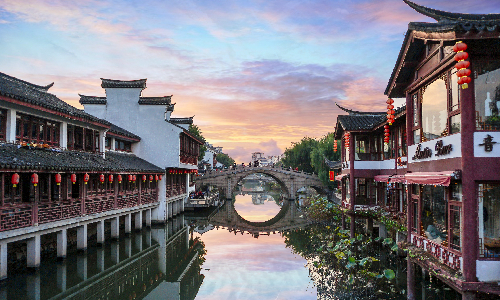
Editor: Chi Mengdi
Proofreader: Summer Hou
| City | Five Star hotel list | Four Star hotel list |
|---|---|---|
| Shanghai | Ocean Hotel Shanghai | Courtyard by Marriott Shanghai Central |
 |
![]() About your child or infant, please contact us for a discounted price.
About your child or infant, please contact us for a discounted price.



We started with a few days in Beijing & ended in Shanghai, from where we visited the Forbidden City and Great Wall. In between we visited Terra Cotta Warriors Museum, Panda Base, Shanghai Disneyland.

We had a wonderful holiday in China which will remain long in the memory. China is a breathtakingly beautiful country full of splendid temples and palaces, mountains and rivers, peaceful rural scenes and bustling shopping streets.
 QUICK ENQUIRY
QUICK ENQUIRY